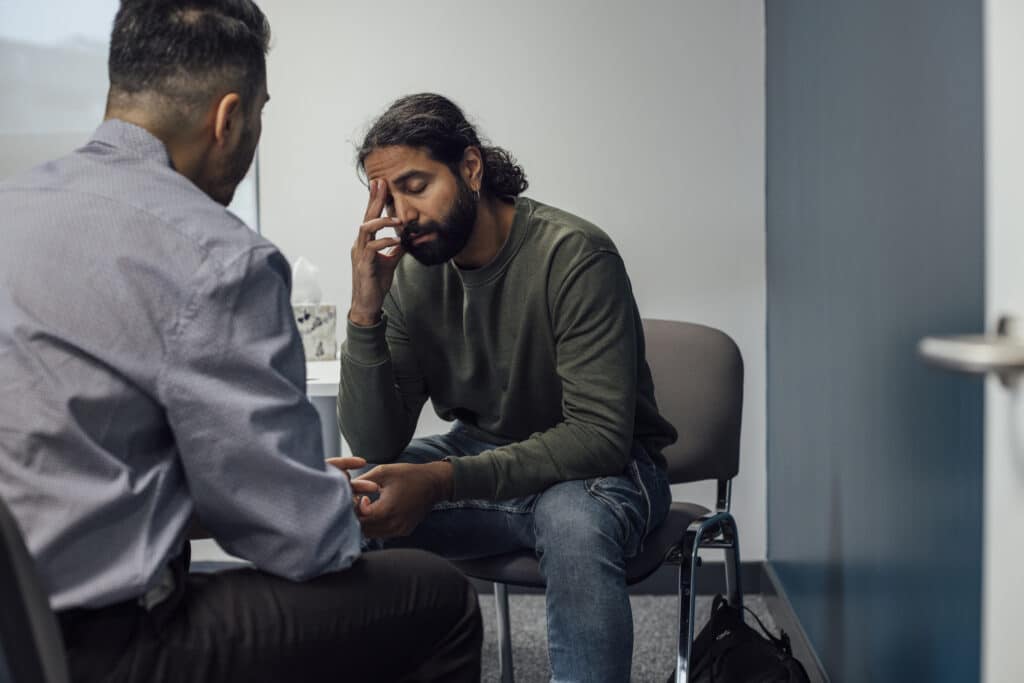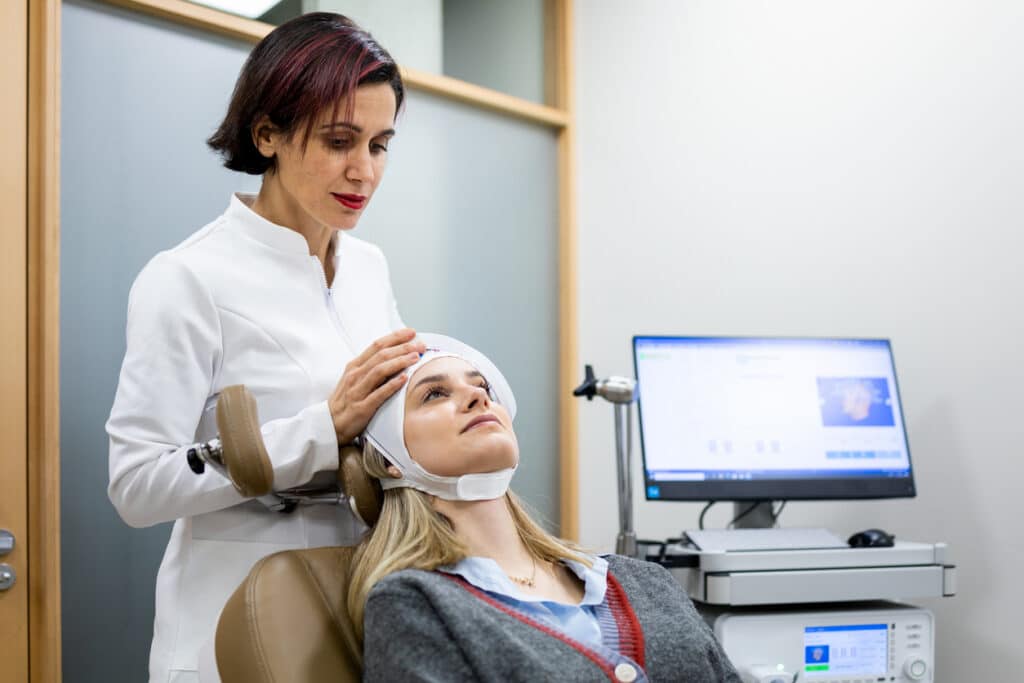When someone struggles with both a mental health disorder and a substance use disorder, it’s called a co-occurring disorder, also known as a dual diagnosis. These overlapping conditions are more common than most people realize—and far more complex.
According to the National Institute on Drug Abuse (NIDA), about 43% of individuals with a mental health disorder will also experience a substance use disorder during their lifetime, and vice versa. When addiction and mental illness exist together, they don’t just complicate each other—they feed off each other, often making recovery feel even more difficult.
But there’s hope. With the right co-occurring disorders treatment, individuals can heal the roots of both conditions at the same time, leading to more lasting recovery and a better quality of life.

What Are Co-Occurring Disorders?
Co-occurring disorders, or dual diagnosis, refers to a situation where someone has both an addiction (such as alcoholism or drug dependence) and a mental health condition (like depression, anxiety, or PTSD). These conditions don’t just show up together by coincidence. They are often deeply intertwined, with one triggering or worsening the other.
For example:
- Someone with untreated anxiety might begin using alcohol or benzodiazepines to calm their nerves.
- A person addicted to stimulants might develop paranoia or depression as a result of long-term use.
- Childhood trauma may lead to both emotional distress and later substance use as a coping mechanism.
This relationship is often described as bidirectional. That means one condition can lead to the other, or they can develop simultaneously, making it difficult to know which came first. But what’s clear is that both need to be treated together for meaningful recovery to happen.
How Common Are Co-Occurring Disorders?
Very common. In fact, co-occurring disorders affect millions of people each year. Consider these facts:
- Around 25% of people with a serious mental illness also struggle with a substance use disorder (NIDA).
- An estimated 40–60% of a person’s vulnerability to addiction is genetic, but that risk is influenced by environment, emotional trauma, and coexisting mental health issues.
- According to SAMHSA (Substance Abuse and Mental Health Services Administration), people receiving mental health treatment are more likely to also use substances such as alcohol, marijuana, opioids, or stimulants.
Despite their high prevalence, dual diagnosis conditions are often underdiagnosed and undertreated, especially when one issue overshadows the other. This is why integrated treatment is essential.
Why Do Mental Health and Addiction So Often Coexist?
There are many reasons why co-occurring addiction and mental health issues go hand in hand. These include:
1. Self-Medication
People with untreated anxiety, depression, or trauma often turn to substances for relief. While drugs or alcohol may dull emotional pain temporarily, they ultimately worsen mental health symptoms over time.
2. Neurological Impact
Addiction physically changes the brain. It affects mood regulation, impulse control, and cognition, making someone more vulnerable to developing a mental health condition even if they didn’t have one before.
3. Shared Risk Factors
Mental illness and addiction share many risk factors, including:
- Genetics (family history of either condition)
- Early trauma or abuse
- High levels of chronic stress
- Neglect, poverty, or unsafe environments
- Lack of emotional support or coping skills
In short, co-occurring disorders are not just common. They’re deeply connected by both biology and life experience.

Common Co-Occurring Disorders
Certain mental health disorders are more likely to show up alongside addiction. These common co-occurring disorders include:
- Anxiety disorders, including Generalized Anxiety Disorder (GAD), panic disorder, and post-traumatic stress disorder (PTSD)
- Depression and major depressive disorder
- Bipolar disorder
- Attention-deficit/hyperactivity disorder (ADHD)
- Schizophrenia and other psychotic disorders
- Borderline personality disorder (BPD)
- Antisocial personality disorder (ASPD)
It’s also important to note that substance use itself can mimic or intensify mental health symptoms, sometimes making diagnosis even more complicated.
According to SAMHSA, people with co-occurring mental health conditions frequently use:
- Alcohol
- Tobacco
- Opioids (e.g., heroin, fentanyl, oxycodone)
- Stimulants (e.g., meth, cocaine, amphetamines)
- Marijuana
- Hallucinogens (e.g., LSD, PCP, ketamine)
- Prescription medications (e.g., benzodiazepines, painkillers)
Signs You or a Loved One May Have a Co-Occurring Disorder
Because co-occurring disorders overlap, they can be hard to spot. But there are some signs that a dual diagnosis may be present:
- Increased mood swings, irritability, or aggression
- Social withdrawal and isolation
- Difficulty maintaining work, school, or relationships
- Using drugs or alcohol to cope with stress or emotions
- Erratic behavior, lying, or stealing
- Changes in sleep or eating patterns
- Unexplained physical health issues
- Feelings of hopelessness or worthlessness
If these symptoms sound familiar, it’s time to start asking questions and considering reaching out for professional help.
Why Treating Co-Occurring Disorders Separately Doesn’t Work
In the past, people were often told they had to get sober before addressing their mental health or vice versa. But we now know this doesn’t work.
Treating one condition while ignoring the other increases the risk of:
- Relapse
- Worsening symptoms
- Increased shame or confusion
- Unstable progress in recovery
Effective co-occurring disorders treatment must be integrated. That means addressing both mental health and substance use at the same time, with a coordinated treatment plan that recognizes how they interact.

What Does Co-Occurring Disorders Treatment Look Like?
At The Meadows, dual diagnosis treatment is a core part of our approach. We understand that people are complex, and healing requires a holistic, individualized plan. Here’s what comprehensive co-occurring disorders treatment often includes:
1. Medical and Psychiatric Evaluation
Before treatment begins, we carefully assess each client’s physical and mental health to identify all underlying issues.
2. Integrated Therapy
We offer therapies that target both trauma and substance use, such as:
- Cognitive Behavioral Therapy (CBT)
- Dialectical Behavioral Therapy (DBT)
- Eye Movement Desensitization and Reprocessing (EMDR)
- Internal Family Systems (IFS)
- Somatic Experiencing
- Group therapy and psychoeducation
3. Medication Management
When appropriate, psychiatric medications may be prescribed to help manage symptoms of anxiety, depression, bipolar disorder, or other mental health concerns.
4. Family Involvement
Because addiction and mental illness affect the whole family, we provide resources and therapy for loved ones to help restore connection and support long-term healing.
5. Aftercare and Ongoing Support
Recovery doesn’t end when treatment does. We offer alumni services, outpatient care, and long-term support to help maintain progress after leaving our program.
You’re Not Alone
Living with co-occurring disorders can feel like being caught in a cycle that’s hard to escape. You may feel like you’re fighting on two fronts—your mind and your cravings—and not making progress in either. But healing is possible.
With the right dual diagnosis treatment, you can understand what’s really going on beneath the surface. You can learn healthier ways to cope. You can break free from self-medicating patterns and begin addressing the pain that drives them.
And if you’re a family member watching someone you love struggle with co-occurring addiction, you don’t have to carry the weight alone. Support, education, and healing are available for you, too.
Find Healing for Co-Occurring Disorders Treatment
At The Meadows, we’ve helped thousands of people recover from co-occurring disorders by using evidence-based, trauma-informed care. We understand the complexity of dual diagnosis, and are committed to providing a safe, supportive space where true healing can begin.
Whether you’re seeking help for yourself or a loved one, we’re here to guide you. You don’t have to choose between treating addiction or mental health—we’ll help you treat both, together.
Contact us today to learn more about how our dual diagnosis treatment plans can support your journey toward lasting recovery.
More FAQs on Co-Occurring Disorders & Dual Diagnosis
Is a dual diagnosis the same thing as co-occurring disorders?
Yes, a dual diagnosis and co-occurring disorders refer to the same thing. Both terms describe a situation where an individual is dealing with two or more conditions at the same time, typically a mental health disorder and a substance use disorder. The terms are often used interchangeably in the context of treatment, with both requiring specialized care to address the interaction between the disorders and help the person manage both simultaneously.
What are the most common co-occurring disorders?
The most common co-occurring disorders include depression, anxiety, bipolar disorder, PTSD, and schizophrenia alongside substance use disorders. These mental health conditions often appear with addictions to alcohol, opioids, stimulants, or other substances.
What is an example of a co-occurring condition?
A common example of a co-occurring condition is someone with generalized anxiety disorder who also struggles with alcohol addiction. The person may use alcohol to manage anxiety, which ultimately worsens both conditions over time.
How are co-occurring disorders treated?
Co-occurring disorders are treated through integrated care that addresses both mental health and addiction at the same time. Treatment often includes therapy, medication management, and support groups tailored to dual diagnosis recovery.
Why do people with co-occurring disorders need personalized treatment?
Each person’s experience with co-occurring disorders is unique, with different symptoms, triggers, and histories. Personalized treatment ensures that both the addiction and the mental health condition are treated effectively, increasing the chances of long-term recovery.
What is the integrated treatment for dual diagnosis?
Integrated treatment for dual diagnosis combines mental health care and addiction treatment into a single, coordinated approach. This may include therapy, medication, peer support, and education, all focused on healing the whole person.



